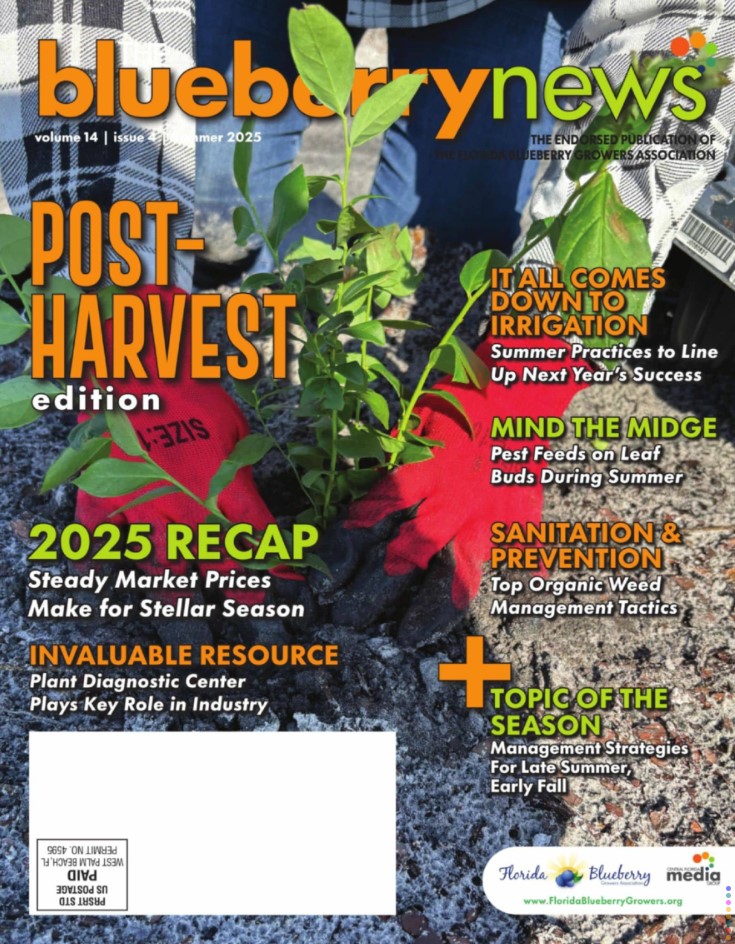Controlling Chilli Thrips
Tools Available to Growers
Summertime in Florida brings with it an important insect pest on blueberries — chilli thrips. This pest was first recorded in blueberries in Florida in July 2008, and typically feeds on new vegetative growth after post-harvest pruning. Damage on foliage can be significant when there are heavy infestations, and control can sometimes be challenging. Although chilli thrips are familiar to many growers, it’s a good idea to review what we know about it and the control alternatives that are available.





